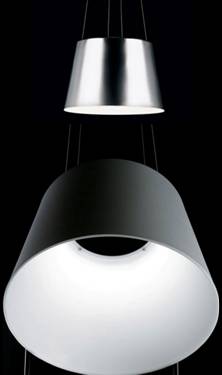Designing using the element of surprise
24 January 2012
Designing using the element of surprise
One of the elements of successful design is the ability to surprise.
This was the finding of Victoria University PhD graduate Dr Edgar Rodriguez Ramirez, who explored the concept of surprise to pinpoint common design strategies that work.
“Surprise gives a sense of novelty that we as humans are hard-wired to find interesting and often attractive,” he says.
One of the practical outcomes of his research is a set of 25 pocket-sized cards for practicing designers and design students which he is currently working on commercialising through an educational publishing house. Each card includes tips on generating surprise, such as aspects to consider when designing and how designers can know when they’re on the right track.
Also a Senior Lecturer and Postgraduate Research Coordinator at Victoria University’s School of Design, Dr Rodriguez Ramirez says he has already trialled the cards with his students, with considerable success. They were able to shuffle through them as a quick way of triggering ideas.
One of his classes was assigned the task of designing lamps. Resulting projects using the element of surprise ranged from a lamp which grows as if waking up when turned on, to a blue electroluminescent wire used to create a path of light for a child to go to the bathroom and back to their bedroom at night, taking inspiration from the ‘Hansel and Gretel’ fairytale.
Dr Rodriguez Ramirez developed his theories on surprise by interviewing 35 industrial designers from around the world, as well as analysing the effectiveness of some of his own design projects. He also conducted participatory design research with Samsung Electronics in Seoul, South Korea and widely renowned design studio Santachiara in Milan, Italy, among others.
“In my work, I look at how people use the objects I am designing and try to surprise them by breaking their expectations,” he says.
“This approach does have some exceptions, however. For instance, when I explored designing mousetraps and tested people’s reactions to them I found that surprise was good for people who were comfortable with mousetraps to start with, but actually made it worse for those who had been uncomfortable at the outset.”
Dr Rodriguez Ramirez’s PhD was supervised by Professor Simon Fraser and Dr Anne Galloway from Victoria University and Dr Kees Overbeeke as an Honorary Research Associate from the University of Technology Eindhoven, The Netherlands. He received a Victoria University PhD Scholarship.
Below are two examples of designs that elicit surprise, created by Dr Edgar Rodriguez Ramirez and associates in the course of his research.

This double screen camera was designed by a team of anthropologists, engineers and designers at Samsung Electronics, including Dr Rodriguez Ramirez. The team followed some of the strategies from his PhD research findings. A surprise second screen can emerge at the front of the camera when taking photos to assist with better photography. For instance, an animated sequence on the screen can attract a baby’s interest, creating more engaging photos, or an animated countdown means people know when to smile in self-timed photos.

This lamp, Aurea, was designed by Dr Rodriguez Ramirez with Studio Santachiara for client and manufacturer FontanaArte in Italy. The surprise is that there is no visible light bulb and instead there is a fluorescent bulb hidden inside the lamp which glows when switched on.
ENDS


 Royal Commission Covid-19 Lessons Learned: Public Submissions To The COVID-19 Inquiry Close On Sunday 27 April 2025 At Midnight
Royal Commission Covid-19 Lessons Learned: Public Submissions To The COVID-19 Inquiry Close On Sunday 27 April 2025 At Midnight Te Whatu Ora Health New Zealand: Low Risk To Public Health Following Fire At South Taranaki Hotel
Te Whatu Ora Health New Zealand: Low Risk To Public Health Following Fire At South Taranaki Hotel NZCTU: Govt Vocational Education Reforms Will Cause Massive Disruption
NZCTU: Govt Vocational Education Reforms Will Cause Massive Disruption NZ Liberation Museum - Te Arawhata: Anzac Day Commemorations In France To Remember All New Zealand Soldiers
NZ Liberation Museum - Te Arawhata: Anzac Day Commemorations In France To Remember All New Zealand Soldiers Royal Commission Covid-19 Lessons Learned: We Want To Hear From As Many People As Possible, Says COVID-19 Inquiry Chair
Royal Commission Covid-19 Lessons Learned: We Want To Hear From As Many People As Possible, Says COVID-19 Inquiry Chair My ECE: Parents Reject ECE Deregulation - 'Children’s Safety Is Not Optional'
My ECE: Parents Reject ECE Deregulation - 'Children’s Safety Is Not Optional'